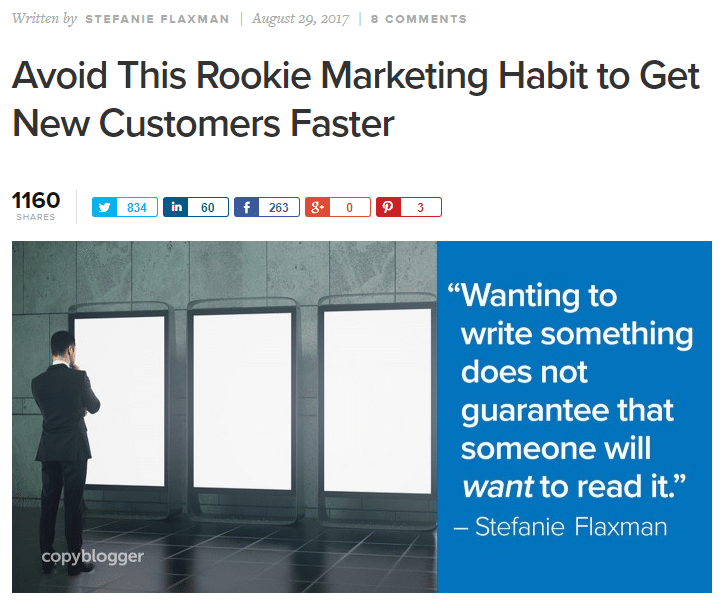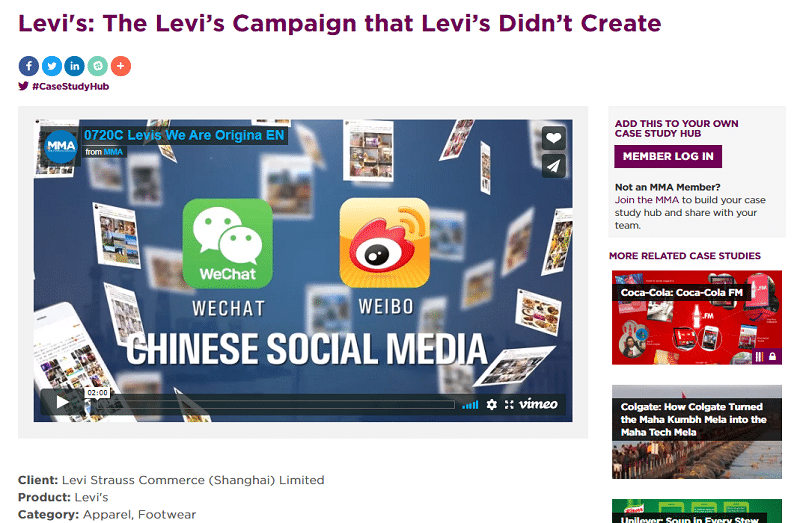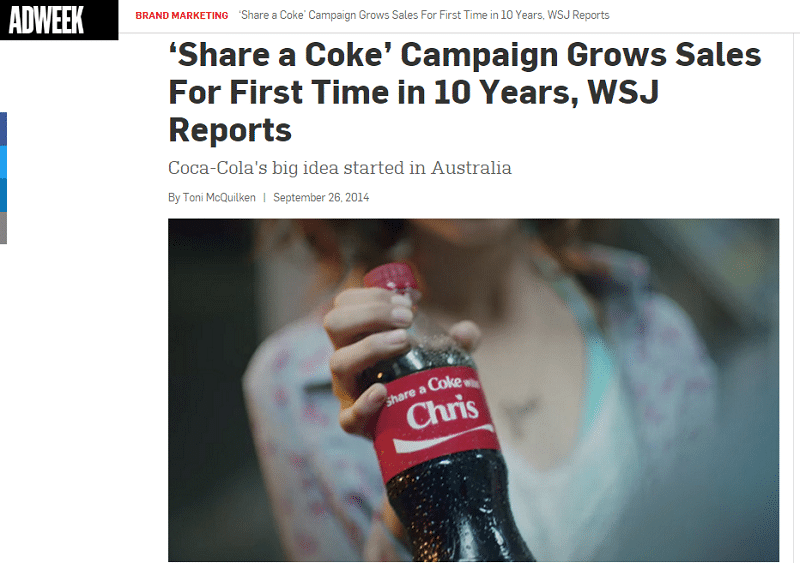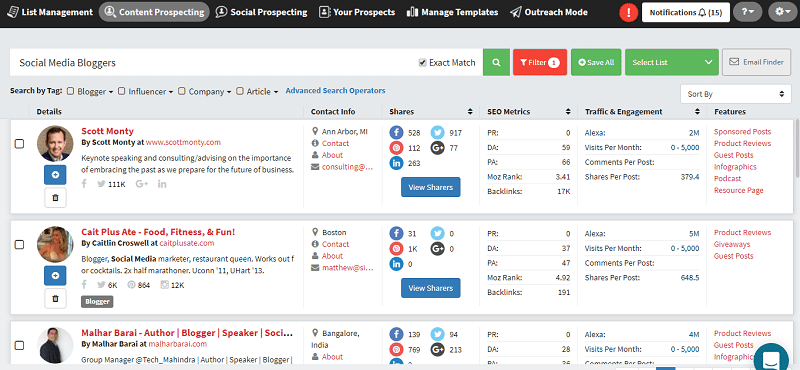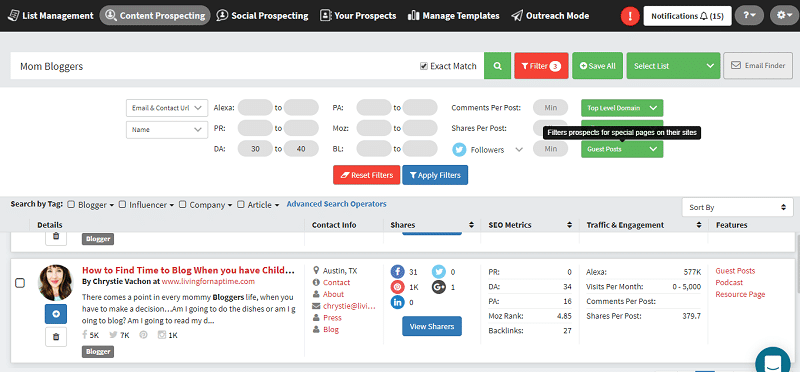Too Many Requests from Your Network
Please complete verification to access this content.
2017 is seeing a myriad of marketing techniques being implemented with great success.
Largely, it’s because marketers now understand that consumer needs are changing.
As we reach the end of the third quarter, let’s take a look at some of the best to hopefully guide your marketing strategy for the remainder of the year – and perhaps into the oncoming year.
1. Expert Blogging
In this day and age when social media rules, just about anyone can proclaim themselves an expert, guru, or self-made CEO.
As such, content consumers crave content penned by the real experts.
They want informative, in-depth, actionable content they can immediately implement, not cookie-cutter, run-of-the-mill content that’s haphazardly done, just so you can publish as scheduled.
Expert content demonstrates a focus on quality instead of quantity.
The content you create must be relevant and informative, helpful and actionable, and created primarily for readers in mind.
But because putting together expert content is a time-consuming exercise, take the time to actually sit down and develop content suited to your audience’s needs.
If that isn’t an option, hire an expert – the real deal – to create trust-building content for your brand.
Examples of marketers and marketing organizations that consistently put out expert content are Neil Patel, Jay Baer, Moz, Kissmetrics, and Copyblogger.
Does it surprise you that they’re widely known and considered authorities in the online marketing industry?
2. Mobile Marketing
If you’re yet to look into mobile marketing as a strategy for 2017, you have a lot of catching up to do.
According to comScore, 2014 saw mobile devices lording it over desktops, as majority of digital media consumption took place on handheld devices.
In 2016, data from analytics firm Flurry confirmed that U.S. consumers spent an average five hours per day on their mobile devices.
As of August 2017, Statista’s figures are at 49.73% for mobile internet traffic versus global online traffic, and 3.5 billion active mobile internet users worldwide.
Long story short, mobile marketing has long ceased to be a nice-to-have.
People are already on mobile, so mobile is where you should also be connecting with them.
To reach out to your target market, mobile marketing involves a combination of digital marketing strategies, such as email, mobile search, web content, social media, SMS and MMS, and mobile apps.
The Mobile Marketing Association (MMA) has compiled a number of mobile marketing case studies to take inspiration from, such as the campaign by Levi’s Shanghai where their creative team partnered with Tencent’s mobile app QQ Music, which Mashable calls “China’s Spotify.”
The goal was to engage millennials, particularly those in lower-tier cities, who saw rival Lee Jeans as the better denim brand.
OMD China, the agency that handled the mobile marketing campaign, set out to connect with millennials for brand recognition and sales increase.
They did this by giving the younger Chinese demographic (15 years to 24) a chance to express their originality through music and fashion via the “We Are Original” campaign.
The results were clearly a winner:
- 2.6 million Levi’s ads by millennials in just two weeks
- 2.9 million consumer engagements in the form of likes, shares, forwards, and comments
- 50% higher CTR on fan-created digital ads over display ads
- 15% boost in sales year-over-year
- 14% increase in eCommerce site traffic
- 45% annual spike in total online sales
Read the full case study here.
3. Personalized Marketing
Personalized marketing is pretty much what it says it is – a marketing strategy that aims to connect with a target consumer on a more personal, deeper level.
Think about it: Every day, your target buyers are bombarded with numerous ads from an endless list of brands, all shouting to the high heavens how they’re better than their competitors.
The subway, the streets, building facades, the bus station – ads everywhere!
The New York Times even suggests adding blank spaces to the endangered list.
Why?
Marketing research firm Yankelovich surveyed 4,000+ people and discovered that the average person today is exposed to approximately 5,000 ad messages a day compared to 2,000 three decades ago.
What’s even worse, about half of the survey respondents believe that marketing has gone “out of control.”
People are tired of being treated as walking, breathing sales targets, which is why personalized marketing makes absolute sense.
Personalized marketing is a strategy that tailors the online experience to your audience’s unique interests.
It’s a marketing technique that sees your target consumers for what they are – human beings with needs different from the next person’s.
So how exactly do you personalize your marketing?
Below are five ways from WordStream:
- Data. Leave no room for guesswork by collecting as much data as you can from your target audience (e.g., demographics, challenges, goals, fears, and interests).
- Buyer persona. Create buyer/customer personas using the data you gathered.
- Content roadmap. Map out your content structure so every piece of content you create addresses the specific needs and interests of your target audience. Ask questions such as “What type of content do top-of-the-funnel leads need?” or “What additional information do qualified sales leads to look for to seal the deal?”
- Content creation. Roll up your sleeves and start crafting personalized content. Put yourself in the customer’s shoes and create content you’d be willing to consume.
- Holistic personalization strategy. Use analytics tools to personalize not just the content on your website but the entire customer experience with your brand.
One personalization marketing example that has seen tremendous success is Coca Cola’s “Share a Coke” campaign. It started in Australia in 2011. In the U.S. where it launched in 2014, sales grew “after more than 10 years of steady declines.”
Said Lucie Austin, one of the original brand executives in Australia to launch the campaign: “At the end of the day, our name is the most personal thing we have. It’s our fingerprint…our identity…in one word.”
4. Email Marketing
You’d think that spam would have tolled the death knell for email.
According to Statista, the global spam volume as a percentage of total email traffic worldwide is a whopping 56.87%, with the most common spam emails originating from the healthcare and dating sector.
(Viagra tablets, anyone?)
But alas, despite our collective hatred for spam, email marketing is still alive and well. In fact, statistics compiled by Constant Contact indicate that:
- Radicati expects 3 billion people to use email by 2020, which is half the total global population
- 205 billion emails are sent every day, a number expected to reach 246 billion by year-end 2019
- Email ROI is a spectacular 3,800% – meaning, $38 for every $1 you spend
- 80% of marketing professionals believe email is a prime factor for customer acquisition and retention
- Research by Forrester found that people are two times more likely to subscribe to your email list than engage with you on Facebook
- Email conversion rates are higher than search and social media combined
There are more where those came from. But the bottom line is that email is alive and well, and email marketing, based on the stats above, still is a powerful way to reach your target audience.
Ninja Outreach recently compiled a list of email marketing case studies, and I’d like to focus your attention on “How Vero Got a 450% Increase in Conversions.” The case study demonstrates the power of segmentation in email marketing, with the Vero team gleaning the following top three lessons from it:
- Send the right message to the right segment
- Use targeting, style, and tone to avoid the dreaded recipient fatigue
- Determine which email campaigns work and automate them
In other words, each email you send should be tailored to the unique needs of the recipient.
Top-of-the-funnel leads won’t respond well to “Buy Me” emails. “Hot” leads – meaning those ready to buy – will likely turn cold if you keep sending them information on something they already know.
And subscribers in Asia will likely unsubscribe every time you send them deals only available in Chicago or California.
5. Influencer Marketing
From Kendall Jenner to Lily Singh, from Rand Fishkin to Instagram’s hand-holding couple Murad and Natalya Osmann, influencer marketing is going stronger in 2017.
It’s the fastest-growing online customer acquisition channel, with 94% of those who have used the marketing technique believing it to be effective.
The benefits include:
- Creation of authentic content about a brand
- Increased traffic to websites and landing pages
- Boost in brand engagement
But influencer marketing isn’t about getting the most popular face on the planet to endorse your brand. There are other factors that play into it – factors that have nothing to do with popularity, such as:
- Authenticity. Is the influencer a good fit? Would anyone believe that this or that celebrity actually wears your jewelry line or drives your car brand?
- Long-term relationships. You don’t want an influencer who endorses you today and will readily endorse your direct competitor the following day.
- The rising influence of micro-influencers. What about the escalating costs of celebrity endorsements? The good thing about influencer marketing, it isn’t anchored on popularity. Micro-influencers – or influencers with small but a more engaged following – can win you bigger returns than if you focus your attention on a popular influencer who will come off as fake to your target consumers.
With influencer marketing, it’s all about finding the right fit.
But how do you find the right influencers for your brand?
There are many ways, and one of them is by using prospecting tools like Ninja Outreach.
In the old days when similar tools were unheard of, the most popular way was feeding your search keywords to Google Search and spending a good chunk of time manually separating the “wheat from the chaff.”
With Ninja Outreach, all you do is enter your keywords, and everything you need to know about prospective influencers are available in just a few clicks, including:
- Contact information
- Social engagement
- SEO metrics
- Website traffic
- The content types they publish or promote
For a more granular drill-down into the data at your fingertips, you can filter the results based on content reach, social media following, engagement, site metrics, and the like.
We also put together a list of influencer marketing case studies to show you how this marketing strategy works and how it helped several businesses so far.
6. Interactive Marketing
How much has “Game of Thrones” f*cked you up?
Which Power Ranger would you have been back in the ‘90s?
If you’re a regular on BuzzFeed, you know those to be the titles of two of their user-generated quizzes.
Then again, what’s quizzes got to do with marketing, right?
The human attention span, reportedly, is now less than that of a goldfish, no thanks to smartphones and a hyperlinked web.
Whether this human-goldfish comparison is true or not remains to be seen.
What is indisputable, however, is the fact that so many things are competing for people’s attention these days, which makes attention a highly valued commodity in the attention economy.
Interactive marketing also called event-driven or trigger-based marketing is a one-on-one marketing technique where the direction of the content varies based on customer input.
Quizzes, assessments, calculators, and interactive storytelling are all interactive content tactics implemented by marketers to make the user experience more engaging and effective.
Other popular interactive content techniques implemented by marketers today include:
- Polls/surveys
- Galleries
- Interactive video
- Sweepstakes or contests
- Interactive white papers
- Interactive Infographics
To prove that this type of marketing works, here’s a case study by interactive marketing platform Ceros.
After posting interactive, visually compelling content that gives the reader freedom to influence the content’s direction through the choices they make, NewsCred registered thousands of unique visitors, increased average view time, posted a 20% CTR (from ebook to NewsCred Academy), and tripled their social media engagement.
If you want to see more interactive content in action, here’s another example, also from Ceros:
Final word
Digital marketing is an ever-evolving field. While the above are undoubtedly some of the marketing techniques making marketing teams busy these days, keeping your pulse on changing consumer preferences and other trends should help you steer your strategies in the right direction when the need arises.
What have been your best marketing approaches for 2017 so far?

